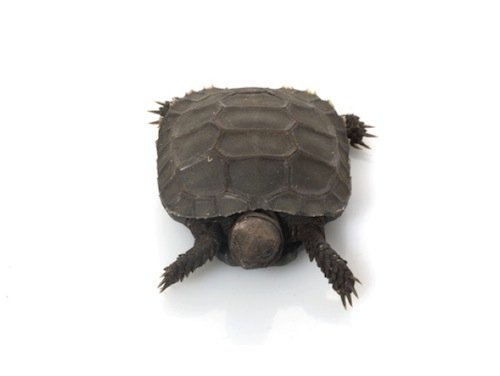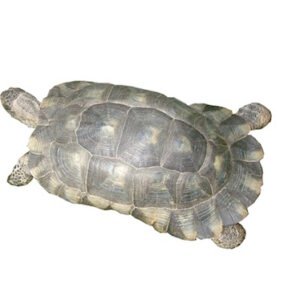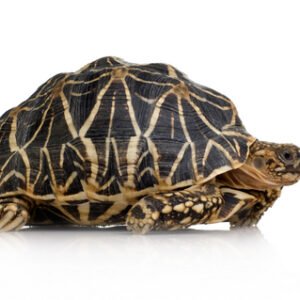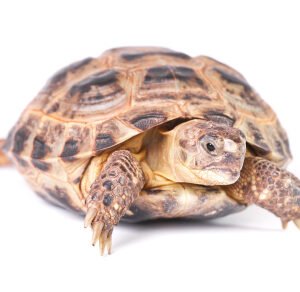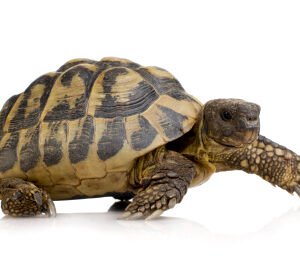Understanding the Burmese Mountain Tortoise
The Burmese Mountain Tortoise (Manouria emys), native to the mountainous regions of Southeast Asia, particularly Myanmar, is an intriguing reptile known for its unique physical and behavioral traits. This tortoise thrives in humid, forested environments where it shelters in dense underbrush, adapting remarkably to its surroundings. Its natural habitat plays a pivotal role in its overall health and well-being.
Physically, the Burmese Mountain Tortoise is distinguished by its remarkable size; adults can reach an impressive length of up to two feet. Its shell, or carapace, features high, domed shapes and prominent growth rings, a stark contrast to many other tortoise species. This adaptation provides not only protection but also helps to retain moisture in its body, which is crucial in its native humid environments. Additionally, its coloration—usually a blend of browns and yellows—allows it to blend seamlessly into the forest floor, providing an effective camouflage against predators.
Behaviorally, these tortoises are known for their docile nature and intelligence. They exhibit a tendency to dig and burrow, using their powerful limbs to create burrows that serve as shelters from extreme weather conditions. Furthermore, they possess a unique social structure, often found in small groups. However, their gentle demeanor should not mislead potential owners into underestimating the care required for their wellbeing. As the Burmese Mountain Tortoise faces mounting threats from habitat destruction and poaching, responsible ownership becomes ever more critical. These challenges not only affect their wild populations but also make them a vulnerable choice as a pet.
By understanding the complexities of the Burmese Mountain Tortoise, prospective owners can appreciate the depth of responsibility entailed in caring for this unique species, thereby ensuring that they contribute positively to its preservation.
Caring for Your Burmese Mountain Tortoise
The Burmese Mountain Tortoise requires specific care to thrive as a pet. Their diet is paramount to their health and well-being. A balanced diet typically consists of leafy greens, fruits, and vegetables. It is essential to provide a diverse array that includes dandelion greens, collard greens, and various fruits like strawberries and melons while avoiding high oxalate foods that can be detrimental. Additionally, offering a calcium supplement, either through cuttlebone or powdered calcium, is crucial for shell health.
Creating a proper habitat for your Burmese Mountain Tortoise significantly impacts their overall health. An ideal enclosure should include both indoor and outdoor spaces, ensuring protection and room to roam. For indoor habitats, a sizeable terrarium is necessary, with a substrate that allows for burrowing. Outdoor enclosures should be securely fenced, shaded, and possess areas for basking. Proper ventilation and a sleeping area also contribute to a comfortable environment.
Temperature and humidity levels must also be meticulously maintained. The basking area should be kept at around 90°F, while the cooler side of the enclosure should remain between 70°F – 80°F. Humidity is equally crucial and should be maintained around 50%-70%. Regular misting or a humidifier can help to achieve this. It is advisable to monitor these conditions using reliable thermometers and hygrometers to ensure a stable environment.
Regular health check-ups and observing any unusual behavioral changes are also essential components of care. Common behavioral issues include lethargy or decreased appetite, which may indicate underlying health problems. Training your tortoise through positive reinforcement can enhance their interaction and reduce stress. In conclusion, caring for a Burmese Mountain Tortoise demands a diligent approach, encompassing dietary needs, habitat setup, and health management to foster a healthy and satisfying relationship. Proper care will ensure that your tortoise lives a long, happy life as part of your pet family.

